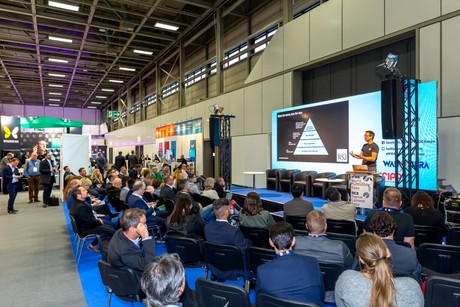04.11.11 - “Alois Senefelder did for image printing what Gutenberg did for letterpress printing, i.e. both inventors enabled a high quality method of duplication.” Senefelder developed lithography in 1797/98, around 350 years after Gutenberg invented the moveable type system used in book printing. The author, actor, and lawyer had been searching for an inexpensive way of duplicating his theater texts. While experimenting with Solnhofen limestone shale, he discovered “chemical printing,” or lithography. The discovery of lithographic printing played an important role for the art scene of the time. The world was ready for this new printing technique in other areas as well; Senefelder’s invention was a good fit for the industrial production methods which were gradually gaining ground. The spirit of the time – Classicism followed by Romanticism – called for the presentation of ancient museum pieces in catalogs as well as the large-scale reproduction of landscape paintings for private salons. The new printing method could cater to these demands.
Lithographic printing also came to play an important role in the art world. As an artistic technique, it has changed little since its discovery. Lithography continues to give painters a good deal of freedom and countless possibilities for variation in their work. The history of lithography is closely linked with the names of important artists such as Francisco de Goya, Honoré Daumier, Henri de Toulouse-Lautrec, Edvard Munch, Paul Cézanne, Ernst-Ludwig Kirchner, Emil Nolde and Käthe Kollwitz. Well known artists from Pablo Picasso to Salvador Dalí round off this list.
The International Senefelder Foundation (ISS) was founded on November 6, 1971, to commemorate the 200th birthday of Alois Senefelder. It purpose is to preserve the memory of this brilliant inventor, to foster the efforts of young artists and technicians, to collect documents, objects, and lithographs, as well as to organize or support exhibitions that promote the technique of lithography and its further development. The foundation presented its exclusive Garte collection for the first time from July 1 to August 28, 2011, at the German Newspaper Museum in Wadgassen. Over 500 pieces from the collection were shown in the exhibition entitled “Pioneer of Offset Printing. The Garte Collection” The idea to create a traveling exhibition to commemorate Hans Garte and his collection emerged from a long-term cooperation with the German Newspaper Museum.
The foundation primarily promotes itself by presenting the International Senefelder Award. The award honors extraordinary achievements in the field of lithography and its further development. The jury assesses a variety of artistic work in the area of lithographic printing, i.e. images produced on stone; flat-bed printing, produced for example by metal offset plates or foil; and mixed techniques using lithography, offset printing, or a combination of the two. The award was first presented in 1975. Among the previous winners are the artists Bruno Bruni, Ernst Hanke, Oskar Koller, Christian Kruck, Bard Verbaenen and Jim Dine.
The foundation consists of a board of seven members and an advisory council made up of 25 representatives from the world of business, politics, and culture. It has been recognized as a non-profit organization since June 2, 1997.
40 years of the International Senefelder Foundation
40 years of the International Senefelder Foundation
Article ID:
14113
The father of offset printing and his legacy

Tropfbier (“Beer Drips”), humorous commemorative publication for the Senefelder Celebration on November 26, 1898. © Friedrich-Ebert-Stiftung.
Related Articles
-
2020-10-15 10:21
-
2020-10-15 09:50
-
2020-10-15 08:21
-
2020-10-14 10:49
-
2020-10-12 09:49


